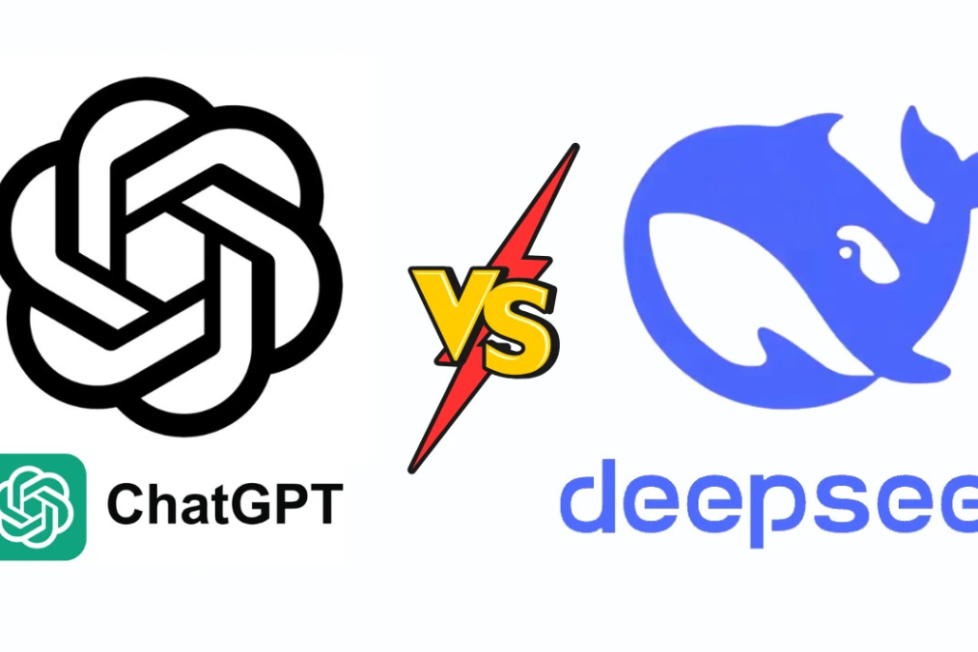DeepSeek vs. ChatGPT: Comparing the Future of AI-Powered Language Models
DeepSeek vs ChatGPT

DeepSeek vs ChatGPT

Artificial intelligence is undergoing rapid advancements, with new large language models (LLMs) emerging to challenge the dominance of existing systems. OpenAI’s ChatGPT has long been the benchmark for conversational AI, but a new contender, DeepSeek, has entered the field, promising innovative features and advanced capabilities. Both models leverage deep learning to generate human-like text, assist with problem-solving, and enhance user interactions. But how do they compare in terms of architecture, functionality, and real-world applications?
At their core, both DeepSeek and ChatGPT are based on transformer neural network architectures, enabling them to process and generate text in a highly sophisticated manner. They are trained on massive datasets, incorporating internet text, research papers, books, and user interactions to refine their language understanding and predictive text generation.
ChatGPT, developed by OpenAI, is built on the GPT-4 framework. It incorporates a mixture of supervised learning and reinforcement learning with human feedback (RLHF) to fine-tune responses, ensuring more coherent, contextually aware, and human-like interactions. OpenAI has continually iterated on its models, refining them to reduce biases, improve factual accuracy, and enhance usability.
DeepSeek, on the other hand, has positioned itself as an alternative with unique training methodologies and dataset optimizations. It utilizes an architecture that blends standard transformer models with enhanced retrieval-based techniques, potentially improving its ability to provide factual and up-to-date information. While less widely known than ChatGPT, DeepSeek’s design focuses on enhancing user interactions by reducing hallucinations (incorrect or misleading AI-generated information) and increasing contextual depth in responses.
Although both models function as AI-powered assistants, they exhibit differences in their capabilities, strengths, and areas of focus.
ChatGPT is widely recognized for its fluent, natural responses and context retention. It can handle nuanced conversations across multiple turns, allowing for a coherent dialogue experience. OpenAI has optimized the model for creative tasks, including storytelling, brainstorming, and code generation, making it a versatile tool for a wide range of users.
DeepSeek emphasizes knowledge retrieval and accuracy. It integrates real-time data processing capabilities that allow it to pull information from recent sources more efficiently than ChatGPT, which primarily relies on a pre-trained knowledge base with limited real-time updating features. This makes DeepSeek particularly advantageous for applications that require current data, such as financial reports, breaking news, and academic research.
ChatGPT has been trained on a mixture of licensed, publicly available, and proprietary datasets. OpenAI has implemented multiple safety filters and moderation tools to prevent harmful or misleading outputs. However, the model is still prone to biases embedded in the data it has been trained on.
DeepSeek takes a different approach by incorporating enhanced data filtering mechanisms. It attempts to refine the quality of its training data, potentially leading to fewer biases and improved accuracy in factual responses. This structured training process allows DeepSeek to cater more effectively to enterprise-level solutions that require reliable, verifiable data.
Both DeepSeek and ChatGPT offer strong programming assistance, but their approaches differ. ChatGPT is widely used by developers to generate, debug, and explain code across multiple programming languages. It integrates well with platforms like GitHub Copilot and IDE plugins, enhancing workflow automation.
DeepSeek, while also adept at coding assistance, places a stronger emphasis on algorithmic problem-solving and structured debugging. It can generate highly technical documentation and assist with complex problem-solving tasks, making it particularly appealing for researchers and developers working on advanced AI applications.
One of ChatGPT’s strengths lies in its ability to adapt to different writing styles, tones, and user preferences over time. OpenAI has enabled users to set instructions that guide the AI’s responses, making it highly customizable for business and creative professionals.
DeepSeek aims to push personalization further by introducing real-time adaptability based on user interactions. By integrating user feedback loops more seamlessly, it seeks to provide responses that evolve dynamically, adjusting to the user’s expertise level and preferred conversational style.
Both DeepSeek and ChatGPT have applications across numerous industries, but their strengths make them more suitable for different tasks.
Despite their impressive capabilities, both models face challenges related to AI ethics, misinformation, and accessibility.
As AI models continue to evolve, competition between platforms like ChatGPT and DeepSeek will drive further innovation. OpenAI is expected to refine ChatGPT with better real-time capabilities and improved fact-checking mechanisms. Meanwhile, DeepSeek’s emphasis on structured knowledge and adaptability could pave the way for more domain-specific AI applications.
Looking ahead, hybrid AI models that combine generative capabilities with retrieval-based accuracy may become the new standard. Enterprises and individual users alike will benefit from more reliable, customizable, and transparent AI-driven solutions.
The race for AI supremacy is far from over, and as DeepSeek and ChatGPT continue to push the boundaries of what’s possible, the future of human-AI interaction is set to become even more dynamic and intelligent.
